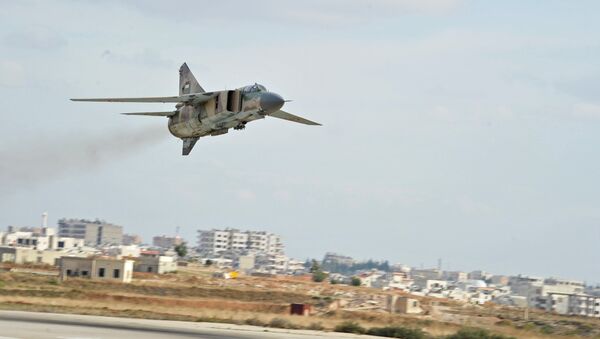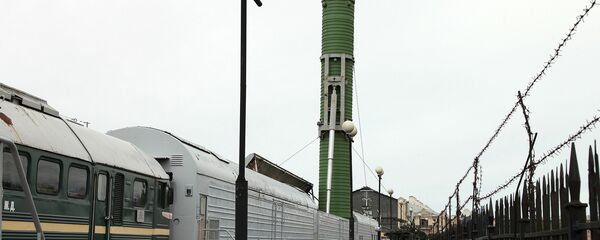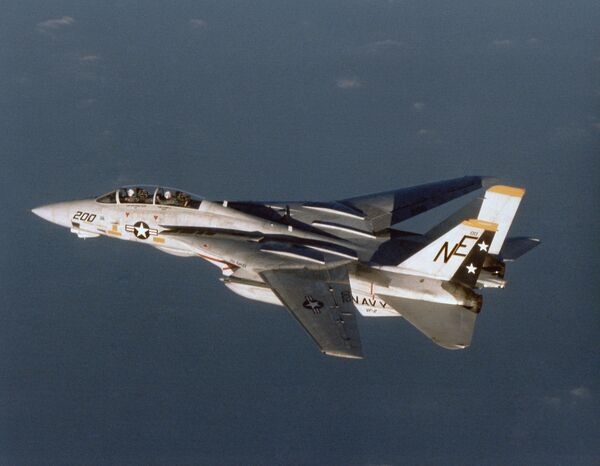In an article dedicated to the pair of variable-sweep wing (variable-geometry wing) planes for RIA Novosti, Kotz recalled that both aircraft have had a long and rich history, participating in dozens of armed conflicts around the world. Perhaps most significantly, the MiG-23 and the Su-17 and their successors have been successfully deployed in Syria in the ongoing campaign against the jihadists.
"The variable-geometry wing principle implemented in both planes allowed Soviet designers to solve an old dilemma," the observer wrote. "A straight wing gives a fighter a higher lift force coefficient. Under such an arrangement, the plane's pilot has a much easier time taking off from an airfield, especially if the plane is loaded up with ammunition and fuel."
With the incorporation of variable-sweep wing technology, the Mikoyan MiG-23 and Sukhoi Su-17 would end up the best of both worlds, making their development something of a revolutionary breakthrough in Soviet military aviation design.
Structurally, the analyst explained, the variable sweep wing consists of rockable pivot arms, the inner wing, the center wing and the turning mechanism. "On takeoff and landing, the pilot puts the wings into the minimum sweep position. During flight, the airplane gradually begins to 'press' them against the fuselage. When supersonic speed is achieved, they take maximum sweep position. The drawbacks to this design were its large mass and complexity, which can make them difficult to repair in poorly equipped airfields."
Still, Kotz noted, the advantages, when combined with the other innovative technologies installed onboard the planes at the time, far outweighed these disadvantages. "A fully armed and refueled 20 ton MiG-23 needed only 450 meters of runway space for takeoff. Here, it is superior, for example, to the more modern fourth generation MiG-29, which is in the same weight class. The maximum speed of the fighter with its wings pressed back climbs to 2,500 km per hour, which again is comparable to a modern aircraft."
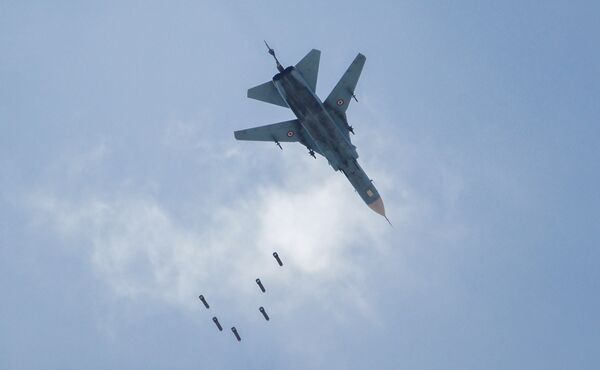
"The MiG-23's high maneuverability, the merits of its design, modern weapons and avionics allowed the plane to emerge victorious in over 30 air battles during the 1980-1988 Iran-Iraq War, where the planes were flown by Iraqi pilots. The Iranians, who won only 9 victories, flew the American F-4, F-5s and F-14s (the latter, incidentally, also a variable-sweep design). The MiG-23 performed particularly well in dogfights, but gave way somewhat in duels at long range."
"American pilots and technicians carefully studied the MiGs, disassembled them to the smallest screw, reassembled them and used them, up to 1988, in training for air battles. The main advantage attributed to the machine by the US pilots was its excellent acceleration and speed characteristics, and good cabin ergonomics. However, technicians characterized the repair and maintainability as 'horrendous'. This may have been the cause of the high accident rate for the aircraft. Through the years of its service, as a result of various accidents and incidents, over 100 MiG-23s have been lost."
The MiG-23 has since been retired from service with the Russian Air Force. Nine countries, including Kazakhstan, Angola, Cuba, Libya and Syria continue to operate the planes. Nearly thirty countries from Eastern Europe to Africa to Asia would operate the planes from the time they were introduced in 1970. Over 5,000 MiG-23s were built.
Afghan War Veteran
In the case of the Sukhoi Su-17, while the fighter bombers, along with their Su-20 and Su-22 export modifications, had the "capability to conduct air combat against Western aircraft, they were rarely used for this purpose," Kotz noted.
"In the majority of the armed conflicts they took part in, their main task was to carry out missile and bomb strikes against ground targets. The Su-17 was heavier than the MiG-23 by almost 2.5 tons, and was capable of lifting up to 4 tons of weapons – aerial bombs, guided air-to-surface missiles, suspended cannon pods, etc. into the air. Its take-off distance with full armament onboard ranges from 1.25 to 1.5 km, which at the time was a decent indicator for bombers. The planes have a maximum speed of 2,100 km per hour."
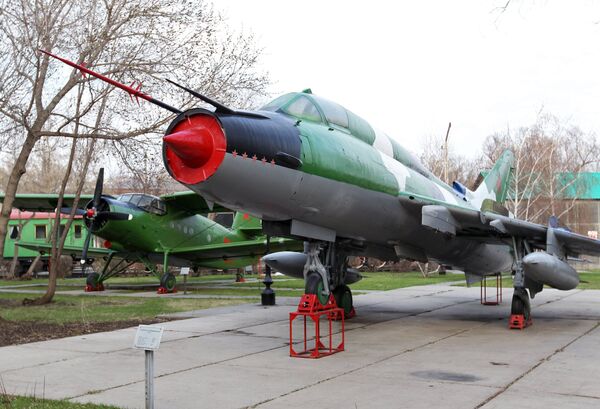
"The Su-17 passed its baptism by fire in the 1973 Arab-Israeli War in the Syrian Air Force. The aircraft conducted 98 bombing sorties, most of them successful. In air combat, one Israeli plane was shot down, and the Syrians lost eight planes. The second time Su-17s would fight the Israelis was during Israel's invasion of Lebanon in June 1982. Losses were very high. On June 11, seven out of a flight of ten Syrian aircraft were shot down by enemy fighters and air defense. However, as a result of this attack, Yekutiel Adam, a high-ranking Israeli general, was killed. One of the reasons for the heavy losses was thought to be the comparably poor training of the Syrian pilots."
"The last time a Su-22 (the export version of the Su-17) hit the attention of the world's media was on June 18, 2017. Then, a US Air Force A/18 Super Hornet shot down the Syrian Air Force fighter near the town of Tabqa, in the northwest of the country. The pilot successfully catapulted, and was evacuated." Many military experts said that the Su-17 had no chance in air combat against the more modern plane. Others were nonetheless surprised that the plane's safety mechanisms continued to function after so many years of hard use.
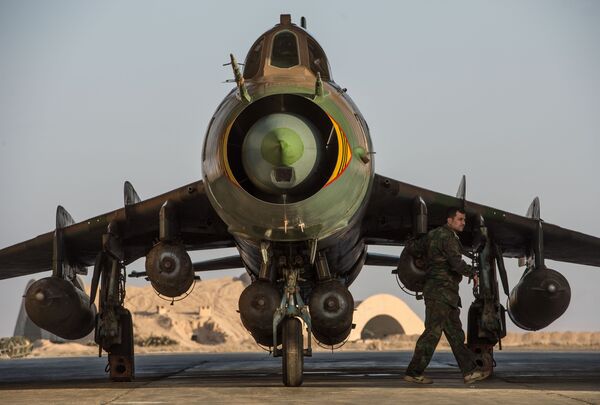
Over 2,800 Su-17s and their export variants were built between 1970 and 1990. The planes continue to be operated by Angola, Poland, Syria and Vietnam. Over two dozen other countries are former operators, stretching from Europe to the Middle East, Africa and Latin America. Angola used the aircraft extensively against UNITA rebels. They were also used in the Iran-Iraq War, in the Libyan Civil War, and by Peru in a series of border incidents and the Cenepa War with Ecuador.
The experience of the MiG-23 an Su-17 was an significant forward step for the Soviet and Russian military aviation industry. Their creation, production and combat used would be an important experience for designers who later created the MiG-27 ground-attack fighter, the Su-24 bomber, the Tu-22M supersonic long-range strategic and maritime strike bomber, and the Tu-160 White Swan supersonic heavy strategic bomber. The latter three planes, Kotz noted, have been successfully used in the Russian mission in Syria against Daesh, Nusra and other terrorists.

Ultimately, Kotz noted that "today, variable geometry wing technology remains relevant perhaps only in the area of bomber aviation, where an aircraft's effectiveness depends largely on how much armaments it can lift into the air. Contemporary fighters, such as the Su-27, the MiG-29 and their various modifications are made according to an integrated aerodynamic design, in which wings are smoothly mated to the fuselage, forming a unified body."
Nevertheless, the variable sweep wing technology perfected in the MiG-23 and Su-17 was able to successfully meet the challenges of its time, and to offer engineers insights which remained relevant for decades to come.
